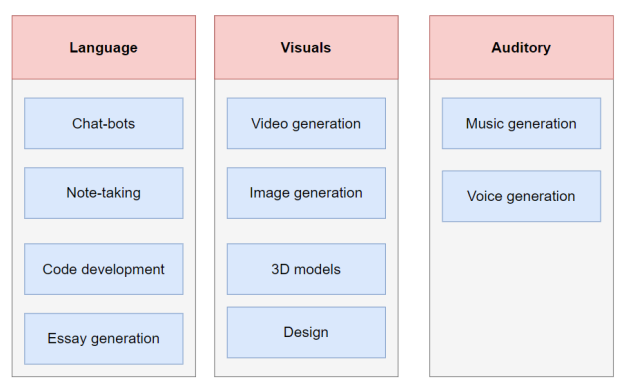A data warehouse is a centralized repository that stores data from various sources within an organization in a structured and optimized format for efficient querying, reporting, and analysis. It is a core component of business intelligence (BI) and data analytics, serving as a foundation for decision-making processes.
Here are the key characteristics and components of a data warehouse:
1. Data Integration: Data warehouses consolidate data from diverse sources such as transactional databases, external data feeds, spreadsheets, and more. This integration process involves transforming, cleaning, and harmonizing the data to ensure consistency and accuracy.
2. Historical Data: Unlike operational databases that primarily store current transactional data, data warehouses retain historical data over time. This historical perspective is essential for trend analysis, forecasting, and identifying long-term patterns.
3. Structured Schema: Data warehouses typically use a structured schema, often referred to as a star schema or snowflake schema. These schemas organize data into fact tables (containing quantitative measures) and dimension tables (containing descriptive attributes). This structure facilitates efficient query performance.
4. Optimized for Querying: Data warehouses are designed for complex querying and reporting. They often employ indexing, partitioning, and materialized views to accelerate query execution.
5. Data Transformation: Data in a data warehouse is preprocessed and transformed to ensure consistency and quality. ETL (Extract, Transform, Load) processes are commonly used to perform these tasks.
6. Historical Snapshots: Data warehouses may include historical snapshots, allowing analysts to compare data at different points in time. This is valuable for trend analysis and historical reporting.
7. Business Intelligence: Data warehouses serve as the foundation for business intelligence and reporting tools. Users can create ad-hoc queries, generate reports, and perform data analysis to extract insights and make informed decisions.
8. Data Marts: In some cases, organizations create data marts, which are subsets of the data warehouse tailored to specific business units or departments. Data marts provide a more focused view of data for particular needs.
9. Scalability: As data grows, data warehouses can be scaled vertically or horizontally to accommodate increasing storage and processing demands.
10. Security and Access Control: Data warehouses implement robust security measures and access controls to ensure that sensitive data is protected and only accessible to authorized users.
11. Data Governance: Establishing data governance practices is essential in managing the quality, lineage, and compliance of data within a data warehouse.
12. Cloud Data Warehouses: With the advent of cloud computing, many organizations are adopting cloud-based data warehouses like Amazon Redshift, Google BigQuery, and Azure Synapse Analytics, which offer scalability and ease of management.
Data warehouses are instrumental in enabling data-driven decision-making by providing a unified and reliable source of information for analysts, data scientists, and business users. They help organizations gain insights from historical and current data, identify trends, improve operational efficiency, and enhance strategic planning.
Here’s a roadmap to help you become an expert in data warehousing:
Becoming an expert in data warehousing is a rewarding journey that requires a combination of education, hands-on experience, and continuous learning. Data warehousing is a complex field that involves data integration, modeling, ETL (Extract, Transform, Load) processes, and more.
1. Learn the Fundamentals:
- Start with the basics of data warehousing. Understand what a data warehouse is, its purpose, and its role in business intelligence and analytics.
2. Relational Database Knowledge:
- Gain a solid understanding of relational databases and SQL. Data warehouses often use SQL-based databases for storage and retrieval of data.
3. ETL Processes:
- Learn about ETL processes, which involve extracting data from various sources, transforming it into a consistent format, and loading it into the data warehouse. Understand ETL tools like Informatica, Talend, or Microsoft SSIS.
4. Data Modeling:
- Master data modeling concepts, including star schema, snowflake schema, and fact-dimension modeling. Learn to design efficient and scalable data models.
5. Data Integration:
- Explore data integration techniques, including data consolidation, data quality, data profiling, and data mapping.
6. SQL and Query Optimization:
- Develop advanced SQL skills and understand query optimization techniques to ensure efficient data retrieval from the data warehouse.
7. Data Warehouse Architectures:
- Study various data warehouse architectures, including traditional on-premises data warehouses and cloud-based data warehouses (e.g., Azure Synapse Analytics, Amazon Redshift).
8. ETL Tool Proficiency:
- Gain proficiency in ETL tools commonly used in the industry. This includes understanding how to design, develop, and maintain ETL workflows.
9. Business Intelligence Tools:
- Familiarize yourself with business intelligence tools like Power BI, Tableau, or QlikView, as these are often used to create reports and dashboards on top of data warehouses.
10. Data Governance and Security:
kotlin
- Learn about data governance practices and security measures in data warehousing, including access control, encryption, and compliance.
11. Master Data Management:
kotlin
- Understand master data management (MDM) principles to maintain data quality and consistency across the data warehouse.
12. Cloud Data Warehousing:
kotlin
- Explore cloud-based data warehousing solutions like Amazon Redshift, Google BigQuery, and Azure Synapse Analytics. Cloud data warehouses offer scalability and cost-effectiveness.
13. Continuous Learning:
csharp
- Stay updated with industry trends, new technologies, and best practices through blogs, books, online courses, and webinars.
14. Hands-On Projects:
kotlin
- Apply your knowledge by working on real-world data warehousing projects. Building and maintaining data warehouses in practical scenarios will provide invaluable experience.
15. Networking and Collaboration:
sql
- Engage with the data warehousing community through networking events, conferences, and online forums. Collaborate with professionals who share similar interests.
16. Certifications:
sql
- Consider earning certifications in data warehousing or related areas. Certifications from vendors like Microsoft, Oracle, and others can validate your expertise.
17. Mentorship:
sql
- Seek mentorship or guidance from experienced data warehousing professionals. Learning from their experiences can accelerate your growth.
18. Teach and Share:
bash
- Teaching others and sharing your knowledge through blogs, presentations, or workshops can solidify your expertise and help others in the field.
Remember that expertise in data warehousing is a continuous journey. Technology and best practices evolve, so staying current and adapting to new tools and techniques is crucial for long-term success in the field.
Sayed is a Backend Python Programmer at sayed.xyz with 1+ years of experience in tech. He is passionate about helping people become better coders and climbing the ranks in their careers, as well as his own, through continued learning of leadership techniques and software best practices.

